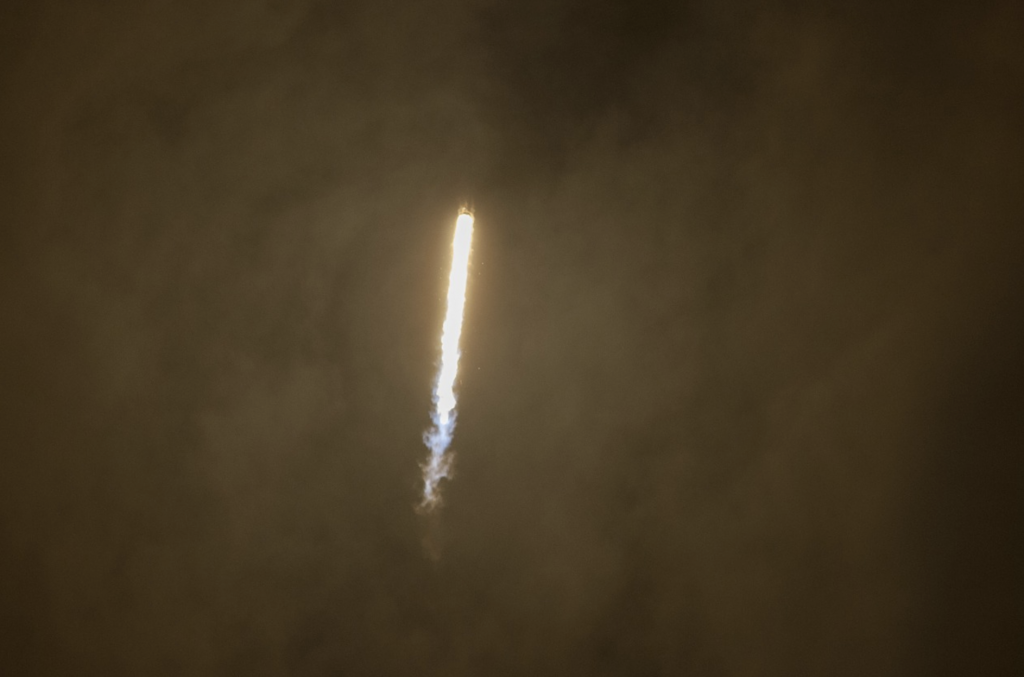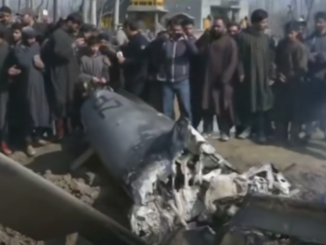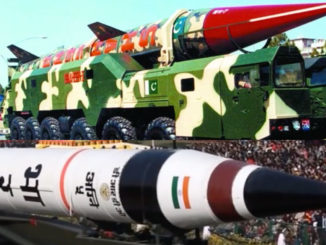
“History shows that stopping an arms race is much harder than igniting one”
R. Jeffrey Smith
From the last few years, leading global nuclear powers have been involved in a race to develop hypersonic weapons. The United States, Russia, and China have up till now developed hypersonic weapons systems comprised mainly of hypersonic cruise missiles (HCMs) and hypersonic glide vehicles (HGVs). In South Asia, a hypersonic technology development vehicle (HSTDV) development is back in full swing where India on 7th September 2020 successfully tested a weaponizable HSTDV in the presence of Defense Minister Rajnath Singh.
The swiftness of these weapons threatens global strategic balance at large and regional security in particular. India’s most recent flight test of its hypersonic vehicle, powered by a scramjet engine, will serve as the building block for next-generation hypersonic cruise missiles. The HSTDV indicates that New Delhi is committed to developing hypersonic technologies. This has been done with the aim of enhancing its offensive counterforce military capabilities and achieving the status of great power that is evident from the statements given by Indian Defence Minister Rajnath Singh. Due to these moves by India, hypersonic arms race is underway, challenging geopolitical order and undermining existing strategic equilibrium. It will also give rise to a new class of threat, able to penetrate most missile defenses and to further compress the timelines for a response by a nation under attack.
Regardless, the flight test is not the first step towards the realization of an indigenous hypersonic vehicle. Similar moves were made by India in 2019, where, it conducted the maiden launch of a new HSTDV, which has futuristic application for next generation missiles and aerial systems. Unlike other missile systems, hypersonic missiles travels at speeds of Mach 5 and higher – five times faster than the speed of sound (3836 mph), which is around 1 mile per second with low altitude and maneuverability of a cruise missile. In comparison, there still exist no credible detectors and interceptors to successfully shoot down hypersonic missiles. Hence, no such systems exist at present that can be used to defend against this technology.
The speed and agility of Hypersonic weapons threaten strategic stability. Interestingly, if India acquires such missile system, it would altogether bring in new security challenges to the region. It would also likely help New Delhi to opt for a pre-emptive strike against Pakistan’s strategic forces. In collaboration with Russia, India is reportedly developing Hypersonic Cruise Missile BrahMos-II which will have Mach 7 hypersonic speed.
Indian efforts to get its hypersonic weapons operationalized, will make South Asian region more vulnerable and prone to a nuclear conflict. With Indian plans of making hypersonic version of BrahMos, which will bring altogether new challenges and broader regional security concerns, it is evident that such Indian capability will help exploit the situation at LOC which is already a complex security situation in the region. For instance, Indian hypersonic capability will leave no room for credible countermeasures in case of Indian first strike which will likely be a matter of a minute or two to reach the desired target. Such scenario will ultimately lead to failure of deterrence stability. So it is a fact that the Indian push for developing hypersonic weapon system has the potential to create instability and uncertainty in a nuclear environment.
Besides, added threat is the ambiguity that accompanies hypersonic weapons systems which, further negatively affects nuclear stability in South Asia. The control on the proliferation of such system is another issue that would have larger impact keeping in mind that no international treaty or measure to limit such proliferation exist at present. India is a case in point, where, it has rejected many bilateral arms control proposals offered by Pakistan. There is no appetite in India for arms control talks with Pakistan. While India is actively consolidating its air and missile defenses, it may eventually force Pakistan to think of obtaining/developing its own hypersonic weapons.
New Delhi’s rush to introduce newer varities of cruise and ballistic missiles in the region is questionable. If inducted in regular war-fighting tech, these weapons will completely change the balance between offence and defence in the region. These circumstances of maneuverability and speed of the weapons could risk a conventional attack being mistaken for a nuclear attack, causing the incident to escalate across the nuclear threshold.
Lastly, hypersonic weapons have the potential to exacerbate dangers in South Asia. Emergence of hypersonic is becoming hostile but the world leaders intentionally and wishfully are ignoring the threats and the potential perils associated in developing such weapons. Indian continuous motivation for such technological developments will bring new security challenges capable of deteriorating an already fragile security environment.
![]()




Be the first to comment